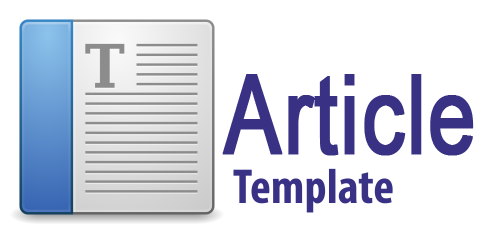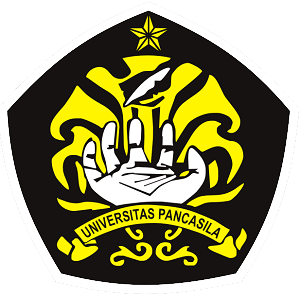Author Guidelines
Manuscripts must be original, have not been published previously in any scientific journal, are not being submitted for publication elsewhere, and will not be submitted to any media during the review process, unless the authors have officially withdrawn the manuscripts from EKOBISMAN: Jurnal Ekonomi Bisnis Manajemen.
Manuscript:
- The script is written based on a template article that is briefly outlined in the format and arrangement section of the manuscript file.
- Download article template first.
- Take advantage of the article template to write a script with paragraph formatting and style as well as a scriptwriting guide.
Manuscript File:
- Manuscripts are written in Indonesian or English and use standard scientific usage.
- Manuscripts are reviewed by the editor, members of the EKOBISMAN: Jurnal Ekonomi Bisnis Manajemen Editorial Review Board, and occasional reviewers. The author’s name and affiliation are removed before reviewing in order to ensure objectivity. Please do not identify the author(s) in the body of the paper either directly or by citation.
- Manuscripts should be prepared in Word format (OpenOffice or Microsoft Word), except for Graphs using Excel program and Figures using JPEG or PDF format.
- Tables, graphs, and figures used should be readable (high quality) and placed after tables, graphs, and figures are referred.
- Manuscripts should be typed using Book Antique fonts at 11 pt, except for the section title, contains the name (without a title), institution/company where the author works, and include contact detail to correspondence with the author, abstract, and for the tables. Manuscripts are prepared in A4 paper, margins on all four sides are 3 cm, and the main body of the article, excluding the structured abstract and the list of references, should not exceed 6000 words..
- Structure and content of manuscripts in EKOBISMAN: Jurnal Ekonomi Bisnis Manajemen refer to American Psychological Association (APA) Style. Manuscripts content should be arranged as the following order: Title, Author’s Name, and Institutional Affiliation, Abstract, Introduction, Methods, Results, Discussion, Conclusion, Acknowledgment (if any), and References.
- Manuscripts should be submitted electronically through online system by Register or Login first to make a submission.
- This journal allows the author to present the ORCID ID’s in article meta data
- The content of the manuscript must be arranged according to the description of the script structure and content. Script content can also be compiled by utilizing article templates.
Manuscript Structure and Contents:
- Title. The title must be brief, clear, specific, and informative which reflect the article content. The length of the title maximum 15 words. Each word of the title should begin with capitalized letter.
- Author's Name. The preferred form of an author’s name is first name, middle initial(s), and last name. Author’s name should appear in the order of their contributions. Author’s name is written without titles and degrees.
- Author’s Institutional Affiliation. The affiliation identifies the location where the author or authors were when the research was conducted. Name of institution(s) where the research was conducted must be accompanied with full address including institution/department, city, zip, code, country, and e-mail.
- Abstract. Abstract must be written in English and Indonesia, in single paragraph and no more than 200 words. Keywords should be written in no more than 5 (five) words or phrases.
- Introduction. The introduction describes the background and objective; it should be written efficiently and supported by references. Convey a brief general background as a prologue to no more than one paragraph. State of The Art through a brief review of literature and previous research (1 - 2 paragraphs) to corroborate the novelty statement or scientific significance or contribution or originality of the article. This statement should be supported by sufficient journal article references and derived from recent journal articles to reinforce the justification of research originality.
- Methods. Methods should be written clearly and completely, especially for concept development, materials, procedures, experimental design, and data analysis; so, they can be repeated by other researchers. Authors should clearly state information of commercial product and equipment used in the research, such as commercial name, product specification, and country.
- Findings. Findings, describe the results of the research by using tables, graphs, or figures. It must be attention to the author to explain the data not only just read them. The findings present the empirical results of the research conducted, while the discussions discuss the results obtained. Finding is strongly recommended written in different sections for each variable or results. Findings is strongly recommended written in different sections for each variable or results. This part contains findings obtained. Table must be presented with title of the tables above the table. In case of extending to the next page must repeat the header. Figure must be presented with title of the figure below the figure.
- Discussion. Discussion should show relevance between the results and the field of investigation and/or hypotheses and supported by references or previous empirical research. Results that already described in the results section should not be repeated in the discussion section. Comparison with other research results also serves to indicate the position of the research conducted in the middle of the discourse of relevant topics. Also write down the limitations of the study Conclusion. Conclusion should be in the form of response from the intended purpose and is not intended as a summary of the results. Advice is in the form of follow-up (implication) to be done in connection with the findings or conclusions of the author. Conclusions should be written briefly in a paragraph format rather than in numbered lists. Based on the research finding, the author should give recommendations for related parties, such as policy makers, non-government organization, and other relevant institutions. The authors also must give recommendations for future research. Recommendations should be written briefly in a paragraph format rather than in numbered lists.
- Acknowledgment (if any) to person(s) or institution(s) who help the experiment should be stated.
- References. References must be a publication of the last 10 years with a minimum of 80% of the journal, listed alphabetically by author's last name and year of publication. Check any references to original sources (author name, volume, issue, year, DOI number). Please use the Reference Manager Application like Mendeley, Zotero or others. EKOBISMAN adapts reference writing in the APA style model.
Submit and Publishing Process.
- A script that is ready to be submitted is a script that is in accordance with the format and style of writing in EKOBISMAN as well as the article template.
- The author must prepare a Statement of Originality by downloading and filling it out as requested.
- Authors who do not have an account must register first.
- Authors who already have an account are directly signed to the journal page.
- Create a new submission and follow the existing stages and then upload the script.
- Upload EKOBISMAN-Statement of Originality as a supplement.
- Monitor and respond promptly to any editor requests.
Copyright Notice
- Copyright of this journal is possession of Editorial Board and Journal Manager, by the knowledge of author, whilst the moral right of the publication belongs to the author.
- Legal formal aspect of journal publication accessibility refers to Creative Commons Attribution-Noncommercial-No Derivative (CC BY-NC-SA), implies that publication can be used for non-commercial purposes in its original form.
- All publications are open access for educational purposes, research, and library. Other that the aims mentioned above, editorial board is not responsible for copyright violation.
Plagiarism Screening.
- To avoid plagiarism, the copyeditor will screen manuscript plagiarism using Turnitin.
- Maximum similarity is 20% and author must reduce it after review evaluation process.
- This facility is provided by the editor. The results of the screening will be delivered at the same time as the comment editor on the manuscript process.


.png)

.png)


